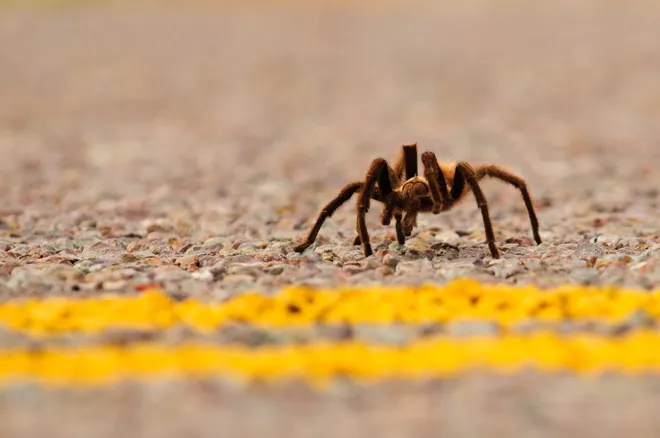Brown tarantula mating season is here! You may see more of the arachnids in these states.

Watch out, arachnophobes; you’re about to be seeing a lot more tarantulas around.
As the weather begins to cool and the season for spooky decorations approaches, brown tarantula mating season is also upon us. Generally running from late August through October, the mating season sees the furry arachnids leaving their usual burrows and hideouts in dry, arid areas to cross swaths of land in search of mates, according to the Missouri Department of Conservation.
Also known as the Texas brown tarantula, Oklahoma brown tarantula, or Missouri brown tarantula,Aphonopelma hentzi is a chocolate brown color with hints of red.
They are hairy, stocky creatures who can grow to be four to five inches long, including leg span. They generally weigh between one to 3 ounces, according to the Oklahoma Department of Wildlife.
Beaching whales mystery:'Something profoundly wrong': Marine biologists puzzled by large beaching of pilot whales
Where you can find brown tarantulas
Unlike web-spinning spiders, these tarantulas often take over old burrows dug by other animals or dig their own, lining the holes with webbing to trap their prey and thwart potential predators. Like many species, they are nocturnal and hunt while most of us are still asleep.
Though they look scary, tarantulas are generally shy and like to avoid human contact, meaning you’re not likely to stumble across one on the average day. During mating season, however, they really put themselves out there, so to speak.
When males begin their migration in an attempt to find mates, they can often be spotted close to houses and even crossing roadways on their great journey.
These brave males don’t have time to waste in finding the perfect mate, as their lifespan in the wild generally only stretches up to year, whereas females can live up to three decades, according to the Oklahoma Department of Wildlife.
Identifying birds in your backyard:What bird is this? These five species are the most likely to be at your feeder
What states can expect brown tarantulas this season
While the large brown spider has aliases spanning a few different states, it can be found in parts of Mexico, along with six U.S. states, including:
- Texas
- Missouri
- Oklahoma
- Kansas
- Arkansas
- Louisiana
While you may be tempted to stomp down on these fuzzy fellows upon initial sighting, know the old adage “they’re more afraid of you than you are of them” applies.
Generally docile creatures often kept as pets, brown tarantulas have venom that is toxic to very small animals but not humans. If continually provoked, they may stand on back legs to show fangs in an attempt to intimidate threats but will not strike unprompted.
Disclaimer: The copyright of this article belongs to the original author. Reposting this article is solely for the purpose of information dissemination and does not constitute any investment advice. If there is any infringement, please contact us immediately. We will make corrections or deletions as necessary. Thank you.




